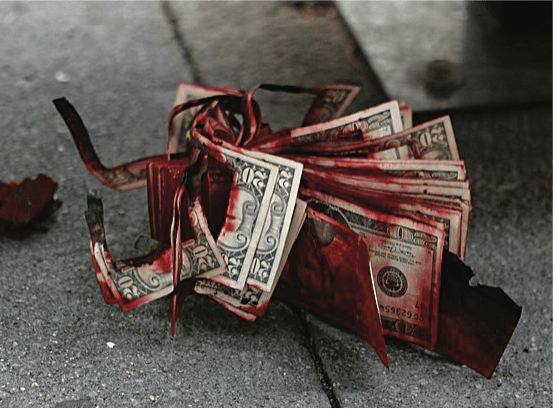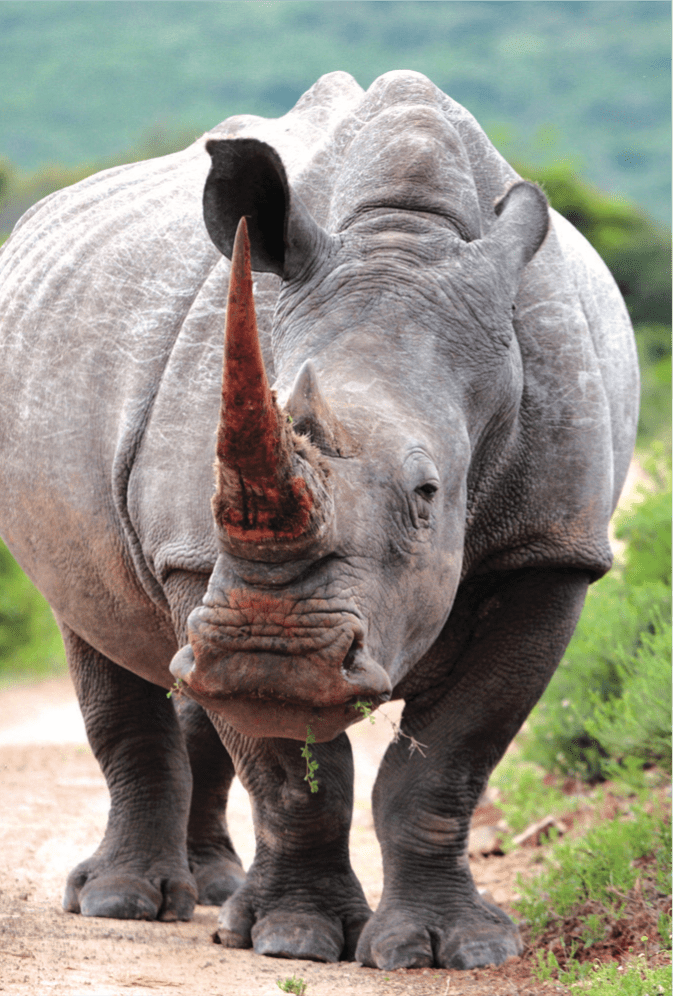WHEN STRATEGIES FOR SAVING ENDANGERED SPECIES NEED TO BE CLOSELY LOOKED AT
Some time ago in the online world, images of Rhinos and Elephants with brightly colored horns started to go around. The first time was in 2013, and the second round of the said images spreading via social media happened in 2015.
But what was the point of having Elephants and Rhinos with brightly colored horns?

TAKING AWAY VALUE
The idea behind this colorful concept was simple: To stop these majestic animals from being killed for their very valuable horns, some people thought about dyeing the horns and even mixing the dye with poison.
Supposedly, some people had already done this.
The truth is that the images were digitally manipulated to present how the anti-poaching idea might work. The internet being the internet, it was no surprise that soon, people believed that the dyeing and poisoning of horns actually happened.
WHO USES ALL THESE HORNS?

If you’re thinking that China is the major destination for the horn trade, you would be wrong – it’s Vietnam.
The reason Vietnam has Rhino horns in high demand is because the Vietnamese believe that as ingredients in traditional Chinese medicine, the horns could combat fevers and liver issues. Worse, it was recently rumored that a local politician’s cancer was cured because of Rhino horn powder. Ironically, using their horns is not a part of Chinese medical tradition, according to a 2013 article written by Gwynn Guilford for The Atlantic.
Finally, Rhino horns are now seen as the ultimate party drug, in the sense that its traditionally-defined ability to help the liver has made it an expensive “accessory” to allow very rich people to keep on partying and abusing their bodies.
HOW STOLEN MONEY FIGURES IN THE IDEA

The idea for it might have come from how some banks have exploding dye packs mixed in with their money.
These packs are filled with indelible dye, and once the packs are out of range of the bank’s transmitter, the packs explode, dyeing the money – and presumably the thieves – with easily identifiable “markings.”
HOW DO WE STOP POACHERS?
The real reason people become poachers is simple: They need money to survive. And with the incredible prices that Rhino horns fetch (in 2013, a kilogram cost $100,000 – and one horn alone weighs about 1-3 kilograms), the temptation might be hard for them to resist.
One solution, as Community Markets for Conservation (COMACO) puts it, is to teach poachers other ways to earn steady, reliable money. In COMACO’s case, they teach former poachers how to do organic farming and provide the market entrance for their produce.
Not only do they break the cycle of killing animals, but they also create a new cycle based on renewable resources that become a more regular source of income, as explained in a 2020 online article by Organic Without Boundaries.
A DISSENTING OPINION
Not everyone believes that Rhino horn’s mythical medicinal properties is the reason behind the illegal animal parts trade (as is the case in Vietnam).
Scientific American released an article written by Jeremy Hsu in 2017 saying that while the horns’ alleged medical properties are a major reason Rhinos are being poached, it’s important to see that the creation of cups and other luxury items using horn material is also a significant factor.

THE PROBLEM WITH DYEING
The colors would have been presumably duller in color, and not as spectacular as purple (one of the colors that could have been used).
Even then, the problem is that dyeing animal horns would make them stand out more when the animals are in their natural habitats. Rhinos tend to roll in the dust to better camouflage themselves, and a very brightly colored horn would make that camouflage effort useless.
Another problem is the way the horns are allegedly dyed. Researchers authored a report published in Pachyderm #55 in 2014 that showed how the use of dyes did not spread into the internal part of the horn – in other words, a good washing and scrubbing would easily have restored value.
A similar issue also involved the idea of applying poison along with the dyes. Indeed, removing the poison and washing the dye off would suffice.
When one got down to it, the problem really was that the images of the pink Rhino horns were just that: images. We all have to rely on more realistic solutions to stop the poaching and killing of animals for trade.






